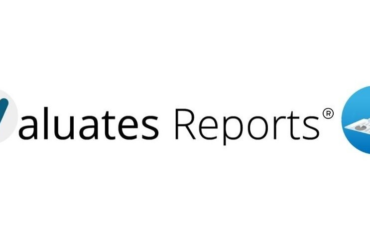
Document management software is an important tool for any business. Depending on the service, it can help save time, increase data security, ensure regulatory compliance and improve collaboration. To help you find the best document management software for your business, we assessed various document management services on the market. We considered features like security, mobile functionality, usability, document sharing and collaboration and version control. We also analyzed different prices and payment options and compared cloud-based to on-premise software to determine which is best for your business.
Rubex by eFileCabinet Online is a cloud-based solution that allows remote employees to log in from any computer with internet access and have the same functionality as they would have when working from the office. We previously selected Rubex by eFileCabinet as the best document management system for businesses with a remote workforce.
Editor’s Score: 97/100
We liked that Rubex offers a sophisticated mobile app that provides access to every stored file, unlike some of the other document management software we reviewed. The system uses a traditional cabinet-folder filing structure and provides several ways to search for documents. Rubex by eFileCabinet Online is available in three pricing plans, which vary in features and storage.
M-Files is a comprehensive document management system with an intuitive and easy-to-learn interface. M-Files contains numerous tools that we found helpful for organizing documents seamlessly, digitizing large volumes of physical papers and automating workflow processes. For example, we loved the automatic metadata suggestions DocuWare offers as well as its version control features, which simplify the storage and retrieval process.
Editor’s Score: 94/100
M-Files can also integrate with Parashift, a deep-tech company that specializes in ML document retrieval, so you can accelerate and simplify your document management processes further. Instead of classifying documents and reading data manually, you can process a wide variety of structured, semi-structured and unstructured documents automatically. It’s also a versatile system that can serve a variety of industries, such as accounting, business consulting, construction, engineering, energy, financial services, manufacturing, professional services and real estate.
For businesses that use many different types of software, DocuWare may be the best choice for a document management solution. Integration helps support consistency and organization and offers real-time updated data. This kind of automation ensures that the team’s valuable time is spent on projects that matter rather than day-to-day tasks.
Editor’s Score: 96/100
DocuWare can integrate with over 500 different applications, ensuring that no matter the industry, you can keep track of your documents automatically while maintaining work output. We found DocuWare’s support for different methodologies of integration especially useful, from deep API-based integrations to simple point-and-click integrations. We also liked that DocuWare offers dedicated connectors for SAP, Outlook and other leading software platforms.
Those looking for scalable document management software should consider FileHold. With several pricing tiers and room to add or subtract users, we found FileHold flexible enough to support the needs of businesses of any size. Those looking to add specific features to their document management systems can do so with FileHold, choosing between standard, optional or custom features. Interested customers can sign up for a 30-day free trial to test its various features before making a final decision.
Editor’s Score: 94/100
FileHold also offers FileHold Cloud, allowing teams to upload documents remotely and work from anywhere in the world where there’s an internet connection. This service supports remote teams and collaboration, ultimately saving time and money. We especially liked this feature given the remote or hybrid nature of many teams in the modern business environment.
DocuPhase offers teams a document management solution that supports productivity and helps team members stay on-task. We found this cloud-based system to be very customizable — your team will be invited to try a curated demo before purchasing the software and pricing is based on factors specific to your team. We liked the level of attention DocuPhase pays to your unique needs since every business is different.
Editor’s Score: 92/100
DocuPhase has a lot of standout tools and features that help teams stay organized and productive. Auto-indexing technology allows team members to preset tags and sort incoming files automatically using artificial intelligence, a feature we found particularly useful and uncommon among other document management software. Advanced search functions help teams quickly find information, facilitating simple document retrieval. Automatic file routing shares information with the appropriate people and ensures that documents don’t get lost in the shuffle. We found these tools to be helpful in boosting productivity and reducing the time it takes for a user to accomplish tasks within the system.
isoTracker provides the best customer support out of all the document management software providers we reviewed. Interested customers are connected with a live agent via chat once they access the website. Then, under the “contact” page, customers have the option to either call a customer service representative or fill in a contact form where there is room to describe either a question or a problem. We liked how quickly this process connects you with a representative and found each interaction with an isoTracker team member to be helpful and supportive.
Editor’s Score: 85/100
Another very customer-friendly feature we liked can be found on the pricing page. While prices aren’t explicitly listed, customers are able to fill in key information about their document management needs to get an estimated price, even before connecting with an agent. This allows prospective customers to compare prices per user, storage and other features outlined on the website. Using this tool, you can know ahead of time whether isoTracker will suit your needs and budget.
The most secure solution on the list belongs to Canon USA, a company that may be more well-known for its cameras. However, Canon provides a top-tier document management system as well, ensuring that documents remain protected. We liked its robust array of security features, many of which are customizable and can be designed to fit the needs of your team.
Editor’s Score: 83/100
Our favorite feature that Canon provides is its Cloud Remote Monitoring, which can help track devices in real time and ensure they’re being used by authorized personnel. Additionally, there are many built-in security solutions that help protect your documents. Using the imageRUNNER ADVANCE DX platform guarantees your data’s confidentiality, accessibility and availability. There are also many optional authentication features that can be used as an added level of security, which we found increasingly important in the age of remote work.
The Kyocera Cloud Information Manager offers unique features that help your team stay on-task and save time wasted on tedious tasks. We believe it’s best for automation because of all the simple and advanced features the software has to offer. One of our favorites is its ability to analyze documents using OCR and extract keywords to help label documents with one click. This tool streamlines the process of uploading and organizing documents, reducing the work needed by the user.
Editor’s Score: 82/100
We also liked that the Kyocera Cloud Information Manager offers one-click indexing too, saving time when searching for requested documents. Documents can stay organized easily using the “drag and drop” function to immediately get scanned documents onto the web. These automation tools help save time and boost productivity in a way few other solutions we reviewed could.
Dropbox offers great solutions for those looking for document management software, whether you’re a solopreneur or a large team. It may be one of the more common document management solutions because of its free plan option, but it is also well-known for its mobility, allowing remote team members to work seamlessly in the system. We liked that Dropbox offers these capabilities with its free version as well, giving small teams and bootstrapped startups an accessible document management solution.
Editor’s Score: 87/100
Dropbox makes moving documents around simple and saves time when doing so. Users are able to complete an eSignature with the click of a button or request an email signature from someone else. We especially liked that Dropbox can also be used anywhere, so teams that work remotely can connect and search for documents as if they were working in the office. When working remotely, Dropbox offers mobile offline folders. We also liked that it comes with the option of a remote account wipe, which can help you remove sensitive data from a lost or stolen device before it falls into the wrong hands. Whether your team is often on-the-move or the documents you work with are, Dropbox’s mobility features will help your team stay on-task.
Document management software can vary widely in pricing and cost structure. The first and perhaps most important factor in the cost of your document management system is whether you select a cloud-based or on-premises version.
Cloud-based software takes the infrastructure maintenance and burden of security off your business and places it with a third-party company. While this reduces the expense and challenge of managing it in-house, you’ll just have to trust that the company is handling your data properly. Cloud-based software is typically paid for on a subscription basis. For most document management software, this could range from $15 to $200 per month per user, depending on the complexity of the solution you choose.
On-premises versions of document management software require your own servers and, generally, a dedicated information technology staff for maintenance. Your business is wholly responsible for the security of your data, but this also means you have full control over your own data. With on-premises solutions, you generally have to purchase a license for each user. Each license can cost $1,000 or more, but it is a one-time fee. However, on-premises solutions typically charge an additional fee for technical support and software updates after the first year, which is usually about 20 percent of the initial licensing cost.
For small businesses looking for software that is easy to manage and not a large overhead expense, we recommend a cloud-based solution. However, make sure your provider adheres to the best cybersecurity practices to protect your data.
The actual price for document management software varies by company. Systems with more complex features tend to cost more while costs for basic document management software without extra features (such as task management tools and workflow automation functions) can be pretty low. Also, the more users you add to a cloud-based system, the higher the monthly subscription price will be. Key takeaway: Cloud-based document management software typically costs between $15 and $200 per user, per month. The price varies on how many features and tools you want access to.
Key takeaway: Cloud-based document management software typically costs between $15 and $200 per user, per month. The price varies on how many features and tools you want access to.
While all document management systems digitize and organize documents, making them easy to retrieve and revise for users with permission, many other features might be built into your document management software. Here’s a look at some of the tools and aspects you might want to consider when choosing a document management system.
One of the most important elements of any software is usability. It could offer all the features in the world, but they won’t do you any good if the system isn’t user-friendly. Many document management systems offer free trials that allow you to test them before buying. If possible, allow your team to try out the software during the free trial period and offer their feedback on what they like and dislike about it. Since everyone has to use the system, be sure all stakeholders get the opportunity to test it out and provide insight about their experience before buying.
While the primary function of a document management system is to digitize and organize files, most modern software also allows users to share files and collaborate on editing them. Some document management software allows users to edit a document simultaneously while others rely on a check-in/checkout feature that guarantees only one user can work on a document at a time. Others offer both options. Determine which is best for your team’s workflow and the types of documents you collaborate on together.
Version control, sometimes referred to as “versioning,” is a critical feature of document management software that lets you keep track of changes to a document. The best document management software even maintains an archive of old versions, letting you see how documents have changed over time and revert to an old version if needed. This is especially important when collaborating to edit documents as human error could result in important information being altered or deleted. With version control, you can revert to an old version of the document and recover any lost information easily.
Image scanning and OCR are useful features for businesses that have a lot of paper records they would like to digitize. Scanning is the first step in turning a paper record into a digital file that can be imported into the software. OCR is a more advanced feature, but it’s a necessity for streamlining large digitization projects. OCR reads the text of an image and makes the content of the image searchable. The best document management systems use OCR to fill out metadata automatically and make it even easier to search for the document later.
Document management software is often home to files that require a manager’s signature, such as purchase orders (POs). Many document management systems integrate with an e-signature tool, such as DocuSign, to allow electronic signatures. You can often send a document to a recipient with a request for their signature through the software. This can improve efficiency when it comes to getting clients to sign important documents or when onboarding new employees to the company, helping you to sign and store files in one central location.
Workflow automation features move tasks along automatically. Take a PO workflow as an example: You could set up workflow automation so that once a PO is generated, it goes to the appropriate manager automatically for their signature. The manager will receive a notification, and when the task is complete, the next relevant team member, such as someone in the accounting department or the manager’s supervisor, will be notified. If more action is necessary, you might be able to build that into the automated workflow as well. The best document management systems allow you to customize workflows to suit the way your teams work together. Tip: Automated workflows can help streamline your business processes and maintain legal compliance.
Tip: Automated workflows can help streamline your business processes and maintain legal compliance.
An essential element of document management software is the ability for administrators to set individual user permissions. Permissions allow certain users to view or edit files while others can be prevented from even seeing those documents in the system. Not only is this useful for efficiency purposes, but it is also an important security measure. The best document management software allows administrators to set permissions by specific groups, as well as to change permissions on the fly if you need to make an exception while keeping the default permissions settings the same.
Many document management systems have a dedicated mobile app. Others rely on web browsers or online portals. Make sure the mobile version of any document management software you are considering is truly mobile-friendly. Even if you personally don’t use it on mobile devices, it is likely other members of your team will.
Not every document management system checks all these boxes while others offer all of them and more. When choosing your document management software, consider which tools and features would be most useful to your business. It is important to strike a balance between comprehensiveness and usability. Some systems can do it all but are a challenge to navigate (not to mention more expensive than simpler software).
Data security is a vital part of any document management system. As an increasing number of businesses go digital, more customers are entrusting sensitive personal information to the companies they do business with. Your organization is responsible for ensuring sensitive information is safe and protected from a data breach. Did you know?: Look for document management services that offer encryption and compliance tools, auto-updates, data redundancy and backups.
Did you know?: Look for document management services that offer encryption and compliance tools, auto-updates, data redundancy and backups.
Researching the document management market will help you understand the most common and important features of document management software. Understand the most basic document management software elements like centralized document storage, built-in collaboration and task management, mobile functionality and data security. Identify market leaders and vet your options before selecting the right software for your organization.
Understand your unique document management needs as a business. For instance, maybe you’re seeking a digital archive that can be updated periodically, or perhaps you’d prefer software that enables the daily creation and editing of new documents. Weigh the benefits of a locally hosted, on-premises solution in relation to a cloud-based solution managed by your vendor partner or a third party. Get specific with what you require in a system before searching.
A good document management system is also easy to implement and scale. The complexity of the software should be based on your team’s technical know-how, allowing them to store and locate documents easily as needed. Your team should be able to share documents and collaborate within the platform, even when they are using mobile devices.
Although every document management system should have security protocols, access controls and file versioning, these features are especially important for those operating within heavily regulated industries. Other features that lend to a document management system’s usability are metadata and tagging options, keyword searching, document editing history and restoration, automatic document retention and deletion, image scanning, optical character recognition and customizable workflows. The best software can also integrate with your other business platforms.
Once you understand what you need from document management software, ask the following questions to software providers:
Additionally, read through customer reviews to get a more grounded understanding of each service’s pros and cons. This is where you’ll get the most authentic and holistic view of a particular software and its offerings.
Once you choose document management software and are ready to sign a contract, closely read any legal documents and ensure everything you’ve discussed is in writing, including which features you are getting for your money. Additionally, ensure there is a fair exit strategy included in your contract that does not threaten you with outrageous fees.
Once you start using your document management software, regularly test your performance with it to optimize your workflow. Do this by inputting and storing documents, granting access to your team to make edits or updates to documents and testing document security to ensure your data is safe. Should you run into any issues, address your concerns with the software provider. If they are unable or unwilling to resolve these issues, consider terminating your contract. Key takeaway: Assess your options and consider your unique needs as a business before deciding which document management software is best for you.
Key takeaway: Assess your options and consider your unique needs as a business before deciding which document management software is best for you.
A document management system can improve efficiency for you and your staff by organizing all of your files and making them easy for anyone in the organization to find. A good document management software is more than just a file cabinet, but an interactive depository for all the files your organization needs.
If you are currently using a manual system, you are costing yourself hours that could otherwise be spent on other, more pressing business matters. A document management system automates many aspects of document management, taking that responsibility off your hands.
A document management system is more flexible than a traditional paper filing system. It accommodates your business’s growth easily, and your indexing system can be adjusted with a few clicks. For growing businesses, most document management software providers offer multiple pricing tiers, so you can increase your storage capacity as the size of your organization increases.
Ensuring that your information is secure is critical, from customer payment information to company trade secrets. Document management systems come with built-in security and access controls so you determine who can access certain documents. In addition, you can see all activity on any given document. In the event of a disaster, like a fire or flood, your files are stored safely in the cloud, away from physical harm.
Searching for the right document can be difficult and time-consuming; it can even cost you money. With the right indexing system, finding a document can take mere seconds, and employees can access the documents they need remotely. The best systems apply appropriate metadata and tagging automatically to make finding documents even easier, without much need to classify them on the front end. Did you know?: Organizations can lose thousands of hours of productivity each year due to poor document management. Discover some other benefits of a paperless office.
Did you know?: Organizations can lose thousands of hours of productivity each year due to poor document management. Discover some other benefits of a paperless office.
Compliance requirements for many business documents can be complex and demanding, but a document management system can help you avoid fines, revoked licenses or even criminal liability by automating key documents within the requirements. For example, HIPAA and the Sarbanes-Oxley anti-fraud law have strict security and policy regulations regarding documents and records. The best document management systems automatically follow those guidelines, so you can rest easy knowing your business is compliant and has an auditable trail of required documents.
A document management system makes sharing information and collaboration easy, allowing documents from different sources to be accessed from multiple locations. Users can also share documents, monitor workflows, grant or deny access to certain documents and see what
Document management systems are used for several things, including securely storing important documents, tracking changes made to documents and sharing documents easily between members of an organization.
A document management system also makes it easy to find certain files by assigning keywords and tags to each document. These systems can also help companies ensure compliance for sensitive documents, such as the Health Insurance Portability and Accountability Act, by providing required security and permission restrictions on certain key documents.
A document management system captures the document, which is done by scanning the physical document or downloading a digital version via email or using other applications. Next, the document is indexed, meaning it is classified with tags, keywords and metadata that make it so it can be searchable. Finally, the document is organized and placed in a folder, where it can be accessed by the appropriate employees.
Most document management systems are cloud-based, so once a file is appropriately secured into the system, it can be accessed from anywhere with an internet connection. Did you know?: Some document management software providers offer mobile apps, which give users even more flexibility and convenience in accessing documents.
Did you know?: Some document management software providers offer mobile apps, which give users even more flexibility and convenience in accessing documents.
The best document management system should be easy to use; it should allow for document sharing; and it should have collaboration tools, mobile functionality and version control. The first two features allow your team to work together on critical documents without needing to be in the same office. Version control maintains a log of every change (and who made it) to your company’s documents.
You’ll also want to make sure the software you choose offers airtight security protocols to ensure that only those with the right permissions can access files.




